This handheld water quality checker is vital for monitoring water quality and ensuring a safe drinking water supply. It offers accurate measurements of TDS, EC, pH, salt and temperature, providing a dependable method for assessing the purity of filtered water and evaluating the effectiveness of water filters.
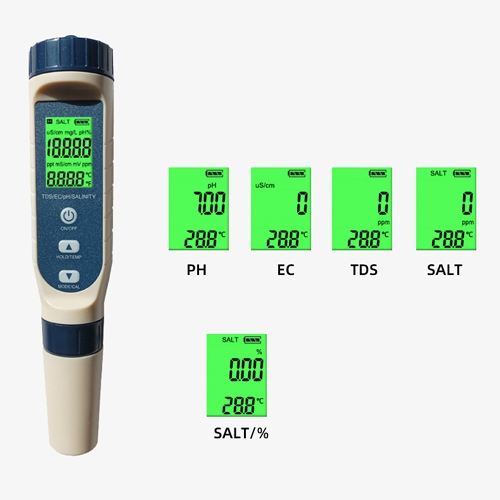
One-Button Switching with Data Hold Function
- One-Button Switch between Multiple Modes: pH, TDS, salinity, temperature and conductivity.
- Data-Hold Function: Allows users to temporarily freeze the current reading on the display, making it easier to record and review measurements.
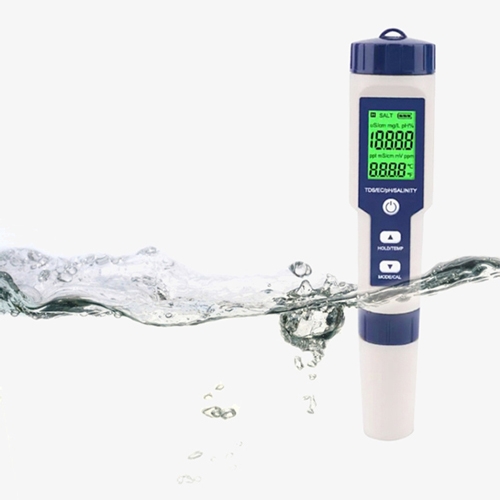
LCD Display Water Quality Tester with Water and Dust Resistant
- Waterproof and Dustproof Functions: IP-65 waterproof and dustproof, effectively preventing testing interference and ensuring accurate readings of electronic water quality tester.
- Backlight LCD Design: Equipped with a backlit LCD display, the electronic water quality tester allows for clear and easy reading of measurements in any lighting conditions.
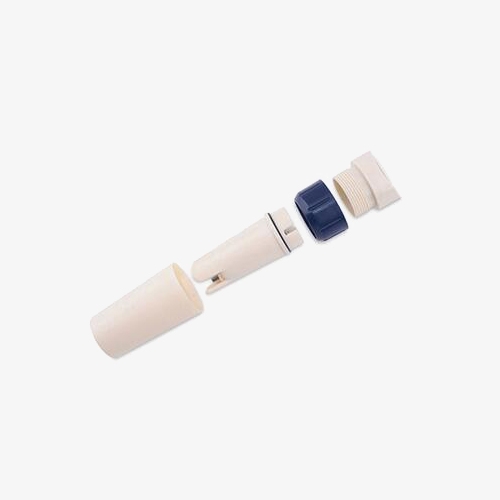
Convenient Water Quality Tester with High-Precision Electrode
- High-Precision Electrode: The titanium alloy probe ensures high accuracy in water measurement, guaranteeing precise and reliable readings.
- Portable Size: The compact digital tester, measuring 7.24x1.72x0.79 inches, making it easy to carry and ideal for testing your aquarium, pool, fish tank, or garden pond.
Applications
SISCO's digital water quality tester offers high precision and versatility, delivering reliable solutions for water quality testing across diverse environments. From ensuring the safety of home drinkable water to managing and maintaining water quality in aquariums, this tester enables users to quickly and accurately measure key parameters like pH, TDS, salinity, temperature, and electrical conductivity (EC). It’s also ideal for testing well water to verify source safety and balancing pH in swimming pools to support a healthy swimming environment. Suitable for both home and commercial use, this tester meets a broad range of water quality testing needs.

Aquarium Water
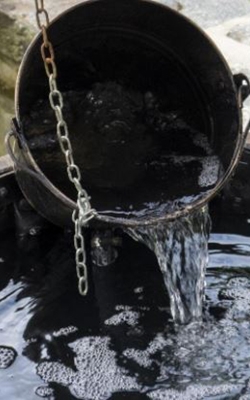
Well Water
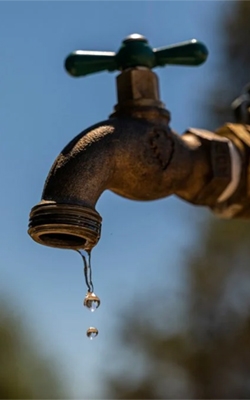
Tap Water
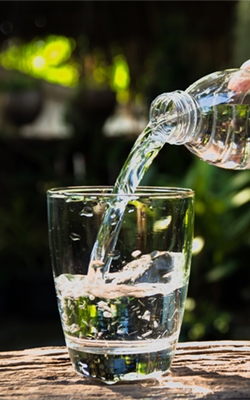
Drinking Water
| Model | SISCO-WQT-5L |
| Function | TDS, conductivity, pH, salt, temperature |
| TDS | 0-10000ppm, 10.1-200ppt |
| Conductivity | 0-10000μS/cm, 10.01-19.99ms/cm, 20.1-400mc/cm |
| pH | 0.01-14.00pH |
| Salt | 0-10000ppm, 10.1-200.0ppt, 0.00-25.00% |
| Temperature Range | 0.1-60°C (32.0-140°F) |
| Operation Temperature | 0-60°C (32.0-140°F) |
| Power | 3*1.5V (LR44) (not including) |
| Size | 187x37x37mm |
| Weight | 90g |
Dimensions (mm)
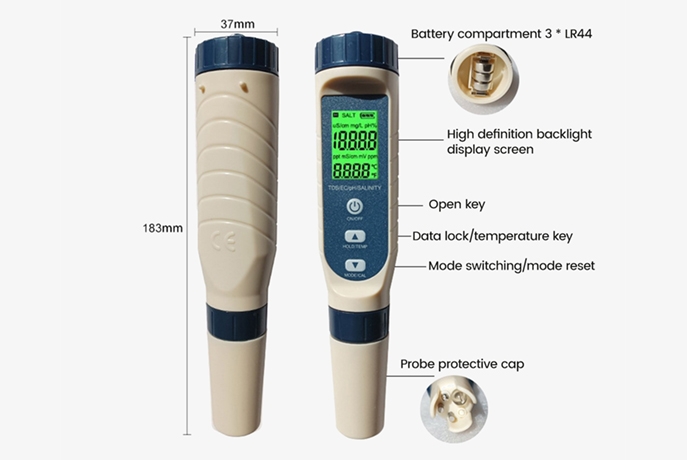
Packing List
- 1 x Water quality meter
- 3 x pH buffer powders
- 1 x User manual
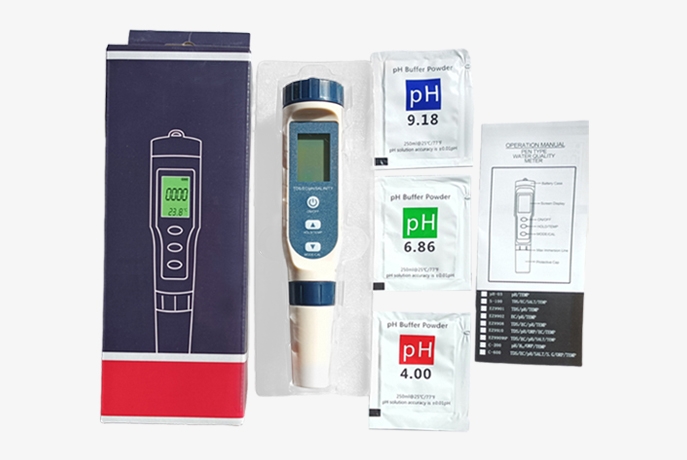
Q1: What is a good TDS reading for drinking water?
A1: A good Total Dissolved Solids (TDS) reading for drinking water typically falls between 50 and 300 parts per million (ppm). Water with TDS levels within this range is generally considered safe and palatable, providing a balance of essential minerals without affecting taste or quality. While the World Health Organization (WHO) suggests that water with TDS levels below 300 ppm is acceptable, levels below 50 ppm may lack necessary minerals, and readings above 300 ppm can indicate excessive impurities or high mineral content, which could affect the taste and potentially pose health concerns over long-term consumption.
Q2: What parameters can a water quality tester measure?
A2: A water quality tester can measure several key parameters to assess the safety and purity of water. Common measurements include Total Dissolved Solids (TDS), which indicates the concentration of dissolved substances like minerals and salts; Electrical Conductivity (EC), which reflects the water’s ability to conduct electricity and indirectly shows the level of ionized substances; and pH levels, which determine the acidity or alkalinity of the water. Some testers also measure temperature, as it can affect other readings, and dissolved oxygen (DO), which is critical for aquatic life. Additionally, advanced testers may monitor turbidity, chlorine levels, and specific contaminants like nitrates or heavy metals. These parameters together give a comprehensive overview of water quality.
Q3: How to calibrate water quality tester?
A3: Calibrating a water quality tester is essential for ensuring accurate measurements. The calibration process typically involves using standard solutions with known values for the specific parameters you intend to measure, such as pH, TDS, or EC. Start by rinsing the electrode or probe with distilled water to remove any contaminants. Then, immerse it in the calibration solution that corresponds to the parameter being calibrated. For pH meters, you may need to use multiple standard solutions (commonly at pH 4.00 and 7.00) to create a calibration curve. Follow the manufacturer's instructions to set the meter to recognize these values, usually by pressing a calibration button and allowing the device to adjust to the known readings.
After calibration, it is important to verify the accuracy of the tester by measuring a third standard solution to ensure the readings are consistent. If the readings deviate significantly from the expected values, repeat the calibration process. Regular calibration is advised, especially before critical measurements or after extended periods of non-use, as factors like temperature and electrode wear can affect accuracy. Keeping a calibration log can also help track when the device was last calibrated and maintain consistent measurement standards over time.
Tips: How to use a portable water quality tester?
- Remove the protective cap;
- Turn the meter on by pressing the "ON/OFF" key;
- lmmerse the meter electrode in the test solution (immersion depth can not be over the immersion line);
- Stir gently and wait until the reading stabilized;
- if you need test temp, please long press"HOLD/TEMP"button to get temp reading;
- After finished, clean the electrode with distilled waterturn the meter off by pressing the "ON/OFF" key;
- Replace the protective cap after use.
Thank you for buying industrial test and measurement equipment on SISCO.com, all products sold by SISCO and the partner cover a 12 months warranty, effective from the date of receiving the products.
What is covered?
SISCO is responsible for providing free spare parts, and free technical support to assist the customer to repair the defective products until the problem is solved.
What is not covered?
- Product purchased from anyone other than a SISCO store or a SISCO authorized reseller.
- Expendable parts.
- Routine cleaning or normal cosmetic and mechanical wear.
- Damage from misuse, abuse or neglect.
- Damage from use of parts other than SISCO approved.
- Damage from use outside the product’s usage or storage parameters.
- Damage from use of parts not sold by SISCO.
- Damage from modification or incorporation into other products.
- Damage from repair or replacement of warranted parts by a service provider other than a SISCO authorized service provider.
- Damage caused by the application environment not meeting the product usage requirements and the failure to perform preventive maintenance.

